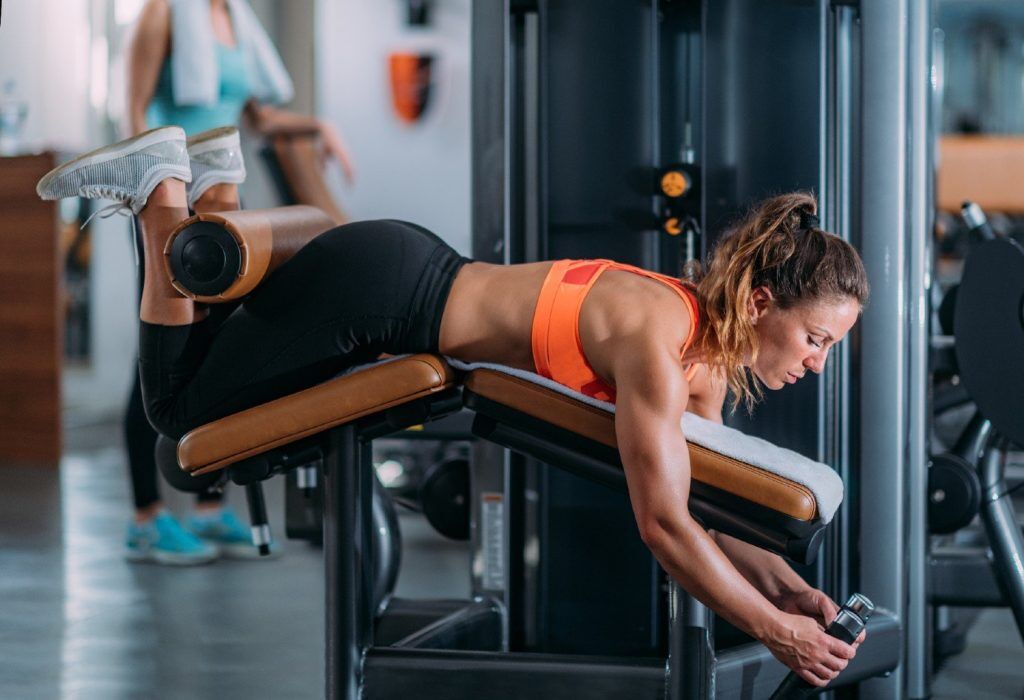
Do Women Need to Train Differently to Men?
In the 90s and early 00s men and women almost universally trained differently. This is obviously a bit of a generalisation, but by and large you rarely saw women deadlifting huge weights nor did you see many men in aerobics classes.
Today, thankfully, the lines are a lot more blurred. Weightlifting has become much more popular with both genders, and the preconceived idea that women shouldn’t lift heavy weights has gone the way of the dinosaur.
But do women need to train differently to men? Or should both genders train identically? The answer may surprise you.
 Training Volume
Training Volume
It should be no surprise to anyone reading this that on the whole men are stronger than women, or at least have a larger capacity to get strong. But the difference for new lifters is a lot less stark, and many women may start off stronger than men in lower body exercises. For beginners there is greater individual differences than differences between genders.
Interestingly, one of the biggest differences between genders when it comes to new lifters is the amount of training volume that they can handle. Training volume simply means how many reps, sets, and how much weight you can move. Five sets of ten reps of squats is a greater training volume than four sets of ten reps for example.
Studies have shown that women can handle higher relative training volume than men. Meaning they can workout for longer, or more frequently than men. That doesn’t mean that if you gave a 100kg barbell to both a man and woman that the woman would be able to perform more reps. But if both a man and a woman were lifting a barbell that was 60% of their one rep max, then the woman would (on average) be able to grind out more reps.
Men may require more rest in between workouts, longer breaks in between sets, and shorter overall workouts. But again, there is more difference individually than between genders. In other words, just because you are a man, or a woman doesn’t mean that you are automatically going to be able to recover faster/slower. It’s just a trend to be aware of.
 Goals
Goals
When it comes to men and women training, the main reason why they tend to train differently is down to intent. For the most part, men and women have similar goals (lose weight, get toned arms, legs, and abs, feel better). But men are more likely to be motivated by a desire to get stronger, rarely do women ask each other how much they bench (generalisation alert).
Men are also more likely to be focused on hypertrophy of the upper body, while women are increasingly interested in strength, we still feel that it would be fair to say that women who are focused on strength or hypertrophy gains would focus more on the lower body (deadlifts, squats, glute bridges).
Because men and women typically have different outcome goals, their training may differ. But there will be many men who are focused on weight loss and toning, and many women who are focused on strength and hypertrophy, so the comparison of genders is less and less helpful with each passing year.
It is true to say that many men aren’t as interested in training their inner and outer thighs, and it is also probably true that many women aren’t excited about training biceps every workout, so you may want to differentiate there. But this is not exclusively a male/female thing.
Should Women Train Differently to Men?
There are certainly differences between men and women when it comes to strength and conditioning. But for the vast majority of men and women, those differences will be minimal. Unless you are training for professional sport, the program you are following isn’t specific enough for gender to become an issue in any case.
Ask most personal trainers whether they need to adjust their programs for men and women and they will emphatically say no. Men and women could easily share the same training program without any issues. In fact, (another generalisation alert) many men and women could benefit from following the same program. Quite a lot of men tend to neglect legs and quite a lot of women tend to neglect the chest and shoulders. So, a full body program would help both.
The truth is that the vast majority of non-injured gym members could get amazing results all from following the exact same workout. For example, both men and women would get excellent results from this:
- Lying hamstring curls 3 x 15-20 reps
- Barbell squats 3 x 6-8 reps
- Walking lunges 4 x 20 reps
- Bench press 3 x 6-8 reps
- Barbell bent over row 3 x 6-8 reps
- Dumbbell push press 3 x 15-20 reps
- Long arm ab crunches 3 x 20 reps
You could edit it for specific needs and limitations, but both women and men would find this workout challenging and effective.


 Training Volume
Training Volume Goals
Goals
